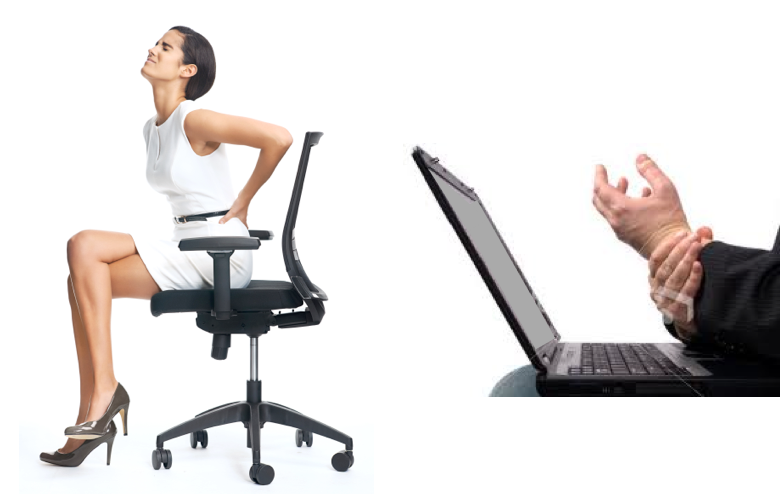While safety measures are continuously being improved and increased within workplaces in Australia, accidents still happen. While it is impossible to prevent accidents altogether, you can equip your staff with the skills and equipment to deal with and treat injuries and accidents when they do occur. Here are the most common workplace accidents.
Sprains and strains
Sprains and strains make up the highest proportion of workplace-related incidents, with a staggering 55% of all accidents relating to this type of injury. Sprains and strains can develop gradually or occur suddenly. Employees most at risk undertake labor-intensive work, work in awkward positions, and perform duties in conditions that aren’t up to standard. Sprains and strains can be caused by lifting, pulling, pushing objects, sitting down or standing for extended periods, slips, trips, falls, bending over, and twisting. They are often the result of soft tissue damage, affecting the muscles, nerves, ligaments, spinal discs, tendons, veins, and arteries. Common workplace sprains and strains include:

- Abdominal hernia
- Back injuries
- Pinched nerves
- Ankle sprains or strains
Fractures
Fractures make up the second-highest number of workplace-related injuries, and even a minor fracture can prevent a worker from completing normal duties for several weeks. Fractures can be anything from crushing the bone, breaking it in half, or simply a tiny crack. The most common causes for breaks and fractures in the workplace are slips and falls, motor vehicle accidents, heavy equipment accidents, and falling objects. Common fractures workers sustain whilst on the job include:
- Stress fractures
- Compression fractures
- Simple/stable fractures
- Compound fractures
Cuts and lacerations
Cuts and lacerations often happen in some workplaces, especially those who use sharp equipment or tools as a part of their job. Cuts and lacerations include minor cuts and abrasions, only requiring first aid attention to deep cuts needing staples or sutures right up to tendon and nerve damage lacerations. Cuts and lacerations are often sustained by rushing, failing to use the correct PPE, inadequate training, not using the right tools for the job, improper storage of tools, poor working conditions, or the result of an accident caused by another. All cuts and lacerations must be treated adequately to prevent infection. Common workplace cuts and lacerations include:
- Puncture wounds
- Lacerations
- Abrasions
- Avulsions
Bruising/contusions
While most people don’t notice small bruises or even remember where they came from, larger, deeper bruises can be extremely painful and limit a worker’s ability to perform everyday tasks sufficiently. Bruises are typically the result of trauma to the skin and are formed as a part of your body’s natural healing process. Common bruises sustained at work:
- Subcutaneous bruises
- Intramuscular bruises
Repetitive strain injuries (RSI)
Repetitive strain injuries occur because of overusing muscles from repetitive motions. The symptoms usually start mild and gradually get worse as the damage progresses. When treated promptly, sufferers can make a relatively quick recovery, and if left untreated, it can cause chronic pain and irreversible damage. Undertaking rhythmic tasks, having poor posture, not exercising, failing to take regular breaks to stretch legs, arms, hands, wrists, back, and neck can result in an RSI. Common workplace repetitive strain injuries:
- Tendonitis
- Carpel tunnel syndrome
- Trigger finger
- Bursitis
Back or spine disorders
Back or spinal disorders can result from improper lifting techniques, inactivity, poor posture, a fall, or excessive pressure on the back that can affect the soft tissue, nerves, and veins. The pain can vary from mild to debilitating. Common back and spine disorders that occur at work include:
- Herniated disc
- Sciatica
- Back pain
- Spinal stenosis
Deafness
Industrial deafness is caused by working in extremely loud conditions, and a person can still be affected by this even with the correct PPE depending on how high the decibel is on the equipment. Other forms of deafness can be caused by injury to the head. The most common form of workplace deafness is:
- Sensorineural hearing loss
Hernia
Hernias occur when internal organs push through the tissue or muscle that is holding it into position. Workplace hernias are mostly caused by strenuous lifting. They can be painful and dangerous if left untreated and inhibit a worker’s ability to conduct work to a normal standard. The most common hernias caused by working:
- Abdominal hernia (inguinal hernia)
- Ventral hernia
- Umbilical hernia
Dislocations
Dislocations are excessively painful until the joint has been immobilized. They are often caused by motor vehicle accidents, slips, trips, falls, and high-impact trauma. Recovery can be long, depending on the severity. Common workplace dislocations include:
- Shoulder dislocation
- Elbow dislocation
- Knee joint dislocation
- Kneecap (patellar) dislocation
Burns
Burns can be serious and can occur through many forms such as chemicals, hot surfaces, steam, fire, and hot liquids, etc. Severe burns can be fatal, and those most at risk are people who work in high-risk environments or those who handle potentially hazardous products. Burns that commonly happen in work settings:
- First degree burns
- Second-degree burns
- Third-degree burns
Most of us spend a lot of time at work, so we all must take precautions to prevent accidents at work. To ensure you and your team can handle first aid duties in the case of an accident, it is wise to complete a first aid course. Paradise First Aid offers comprehensive first aid courses that can give you the confidence and skills to treat workplace injuries. For more information, get in touch today.










